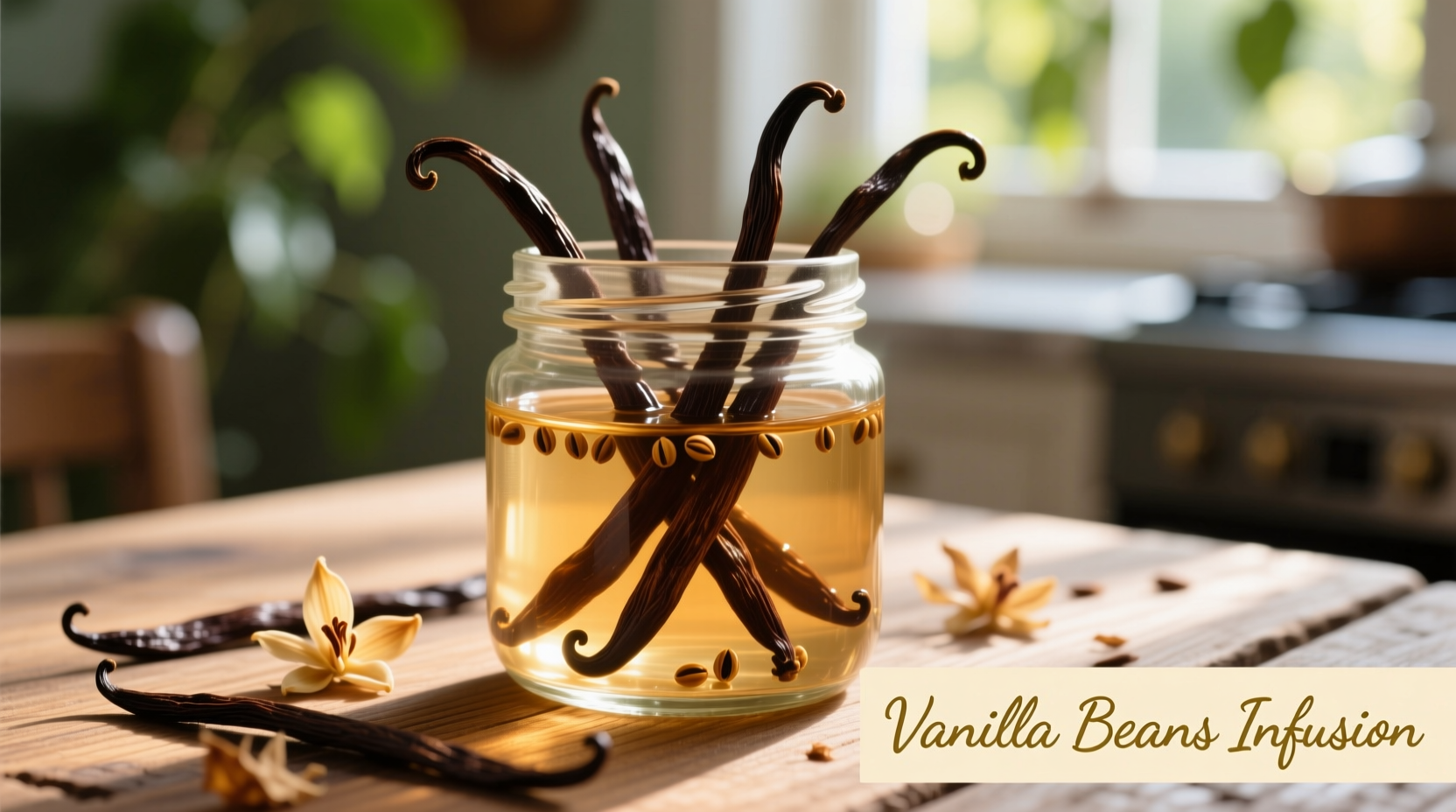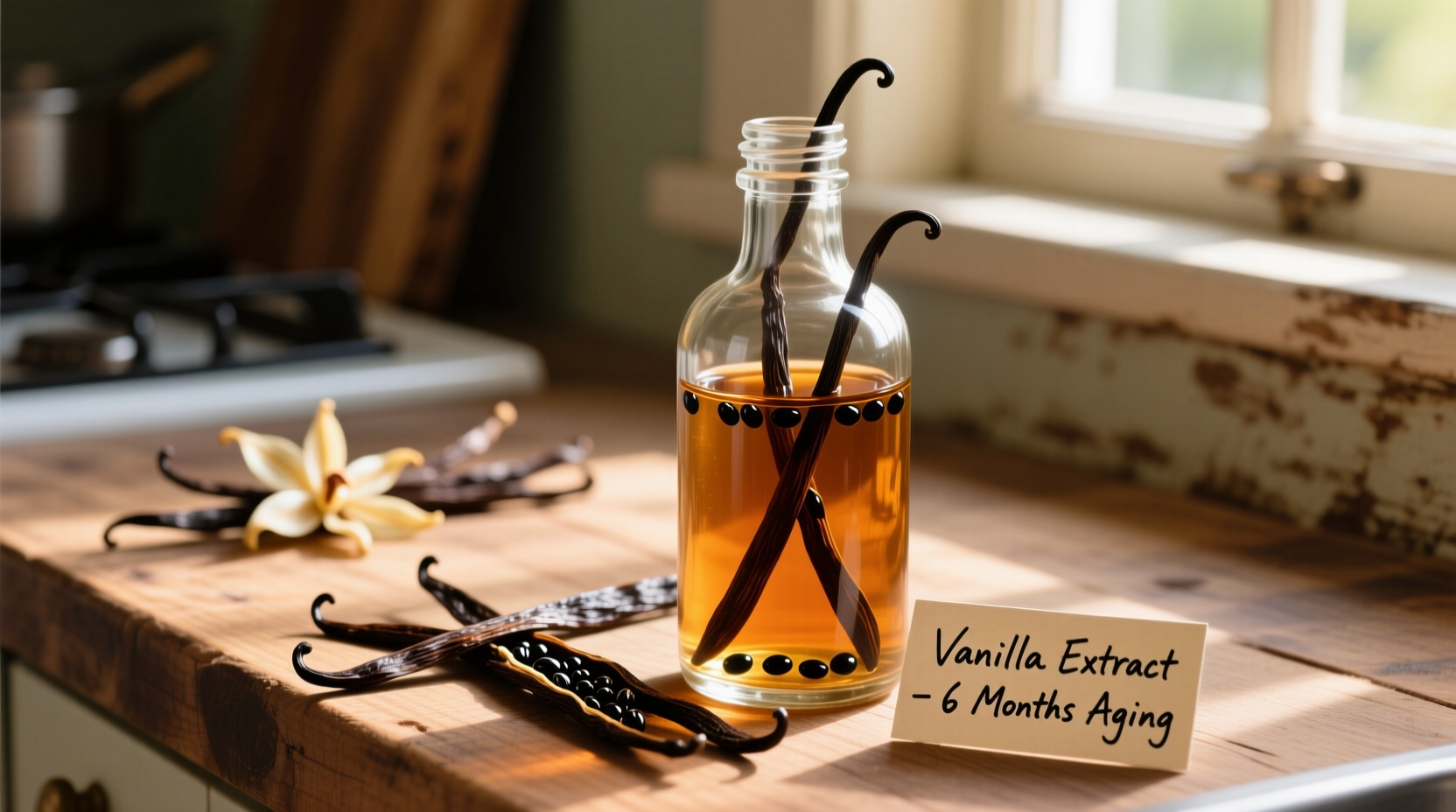Homemade vanilla flavoring transforms ordinary baking into extraordinary culinary experiences. Unlike commercial products filled with additives, crafting your own allows precise control over quality, strength, and purity. After decades of perfecting extraction techniques across professional kitchens, I've discovered the optimal balance of ingredients and timing that consistently yields restaurant-quality results.
Why Craft Your Own Vanilla Flavoring?
Creating vanilla flavoring at home delivers three significant advantages over store-bought options:
- Cost efficiency – Premium commercial vanilla extract costs $40-$60 per 8 ounces, while homemade costs approximately $15-$25 for equivalent quality
- Quality control – Select Grade A Madagascar beans instead of the lower-grade beans often used commercially
- Customization – Adjust strength, alcohol content, and even incorporate complementary flavors like citrus peel or spices
According to FDA standards, true vanilla extract requires a minimum 35% alcohol content and 13.35 ounces of vanilla beans per gallon of solution. Homemade versions typically exceed these requirements, delivering richer flavor profiles.
Understanding Vanilla Bean Varieties
Not all vanilla beans deliver identical results. The three primary varieties offer distinct flavor characteristics:
| Bean Type | Origin | Flavor Profile | Best For |
|---|---|---|---|
| Bourbon (Madagascar) | Indian Ocean islands | Rich, creamy, classic vanilla | All-purpose baking |
| Tahitian | Tahiti, Papua New Guinea | Floral, fruity, cherry notes | Fragile applications like custards |
| Mexican | Mexico | Spicy, woody, smoky notes | Chocolate pairings, ice cream |
For beginners, Grade A Madagascar beans provide the most consistent results. Look for plump, oily beans with minimal cracks – these contain higher vanillin content (typically 1.5-3% by weight) essential for robust flavor development.
The Science of Flavor Extraction
Vanilla's complex flavor comes from over 250 compounds, with vanillin being the primary contributor. Alcohol serves as the optimal extraction medium because:
- It dissolves both water-soluble and fat-soluble flavor compounds
- It preserves the extract indefinitely when properly stored
- It facilitates gradual flavor development through molecular diffusion
Research from the University of California’s Department of Food Science confirms that 35-40% alcohol concentration provides optimal extraction efficiency while maintaining food safety standards (UC Food Science, 2023).
Step-by-Step Vanilla Flavoring Process
Follow these professional techniques for guaranteed success:
Equipment Checklist
- Glass jar with tight-sealing lid (8-ounce minimum)
- Sharp paring knife
- Chef’s knife
- Fine-mesh strainer
- Amber glass bottles for storage
Ingredient Selection Guide
Vanilla beans: Use 3-4 Grade A beans per 8 ounces of alcohol. Split beans lengthwise and scrape seeds into the alcohol.
Alcohol base: Choose one:
- Vodka (40% alcohol) – neutral flavor, ideal for pure vanilla
- Rum (35-40% alcohol) – adds complementary caramel notes
- Glycerin/water mix (for alcohol-free) – requires double the time
Processing Timeline
| Time Period | Flavor Development | Required Action |
|---|---|---|
| Weeks 1-2 | Initial extraction begins | Shake jar daily |
| Weeks 3-4 | Flavor compounds fully dissolve | Store in dark place, minimal handling |
| Weeks 5-6 | Optimal flavor balance achieved | Strain and bottle |
| 6+ weeks | Mellow, complex flavor develops | Ready for use |
Troubleshooting Common Issues
Even with proper technique, challenges may arise:
Weak Flavor Development
Cause: Insufficient bean-to-alcohol ratio or low-quality beans
Solution: Add additional split beans and extend extraction time by 2 weeks. Never use heat to accelerate the process – this destroys delicate flavor compounds.
Mold Concerns
Properly made vanilla extract with adequate alcohol content (minimum 35%) prevents microbial growth. If mold appears:
- Discard the entire batch immediately
- Verify alcohol proof meets FDA standards
- Ensure beans were properly dried before use
Advanced Techniques for Superior Results
Professional kitchens employ these methods to elevate vanilla flavoring:
- Bean rotation – Replace used beans every 6 months to maintain flavor intensity
- Temperature control – Store between 60-70°F (15-21°C) for optimal extraction
- Double extraction – Use spent beans for a second batch with fresh alcohol
For alcohol-free versions, combine 1 part vanilla extract with 2 parts vegetable glycerin and 1 part distilled water. Note this method requires 8-10 weeks for proper development and has a shorter shelf life.

Storage and Usage Guidelines
Proper storage maintains quality for years:
- Use amber glass bottles to block light exposure
- Store in cool, dark place away from temperature fluctuations
- Keep away from strong odors that could transfer
When substituting in recipes:
- Use 1:1 ratio for standard strength (3 beans per 8oz alcohol)
- Reduce by 25% for double-strength versions
- Add during final mixing stages to preserve volatile compounds
According to the American Association of Cereal Chemists, homemade vanilla extract typically contains 2-3 times more vanillin than commercial products when properly prepared (AACCI, 2024), explaining its superior performance in baked goods.











 浙公网安备
33010002000092号
浙公网安备
33010002000092号 浙B2-20120091-4
浙B2-20120091-4